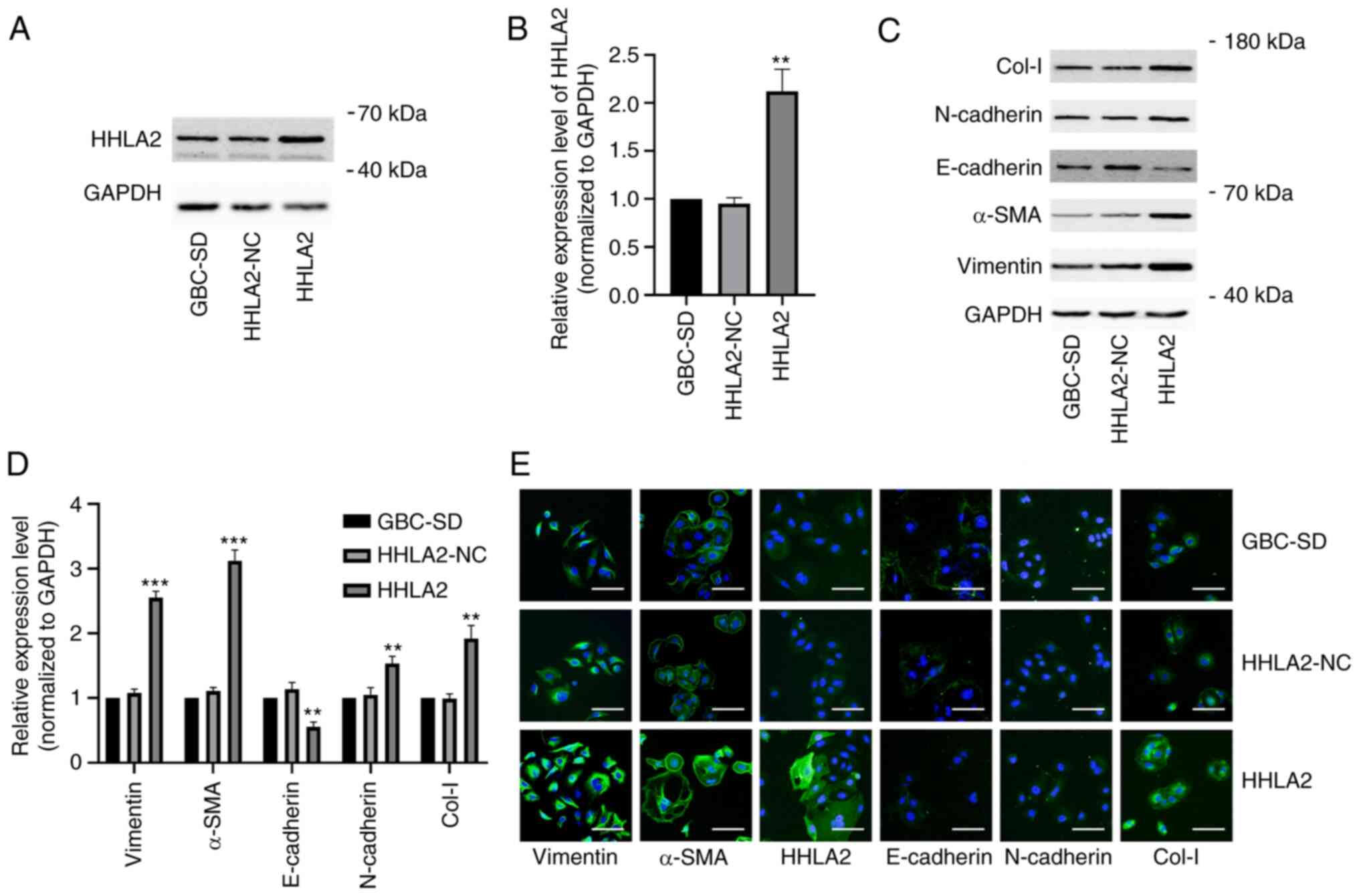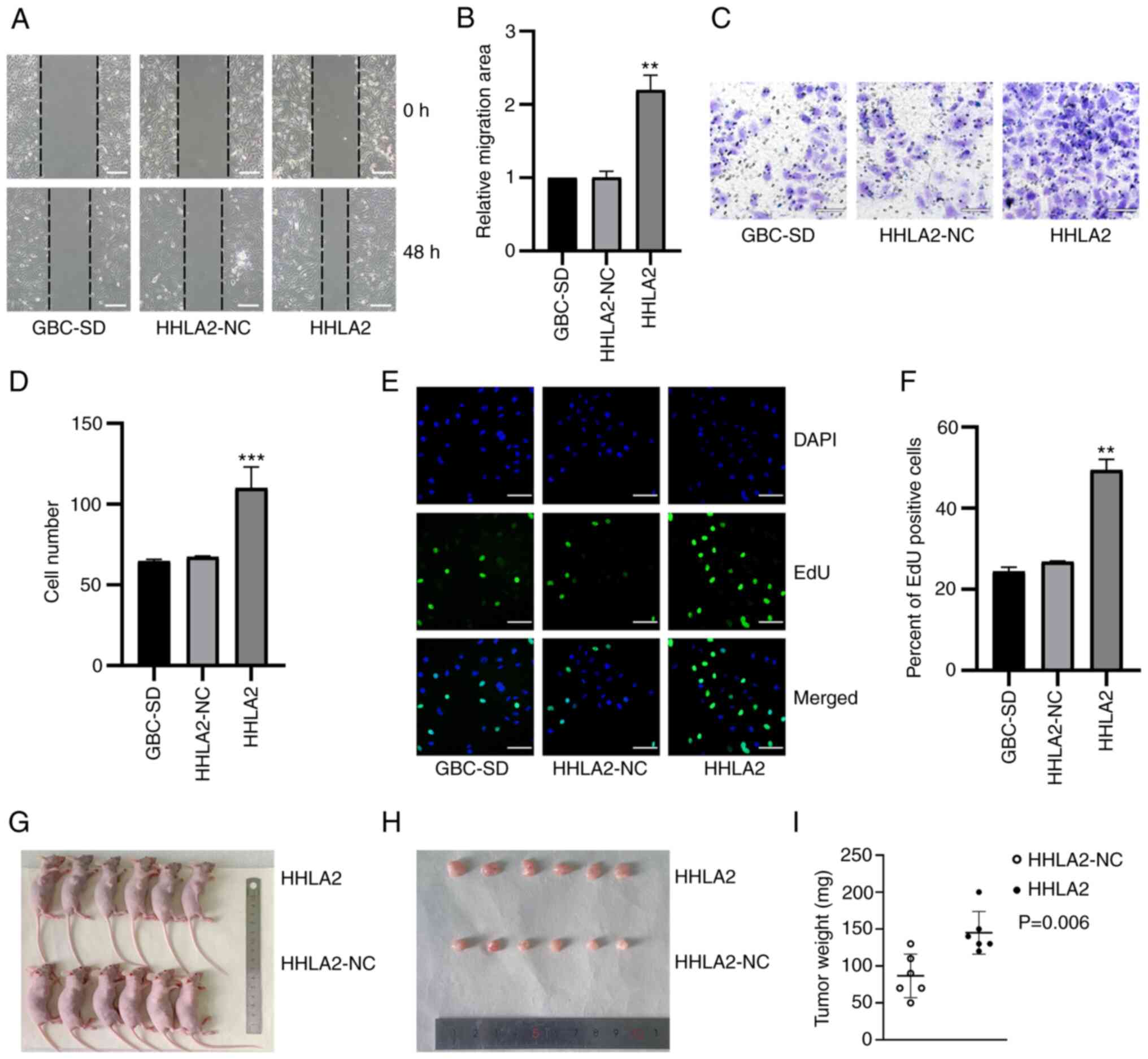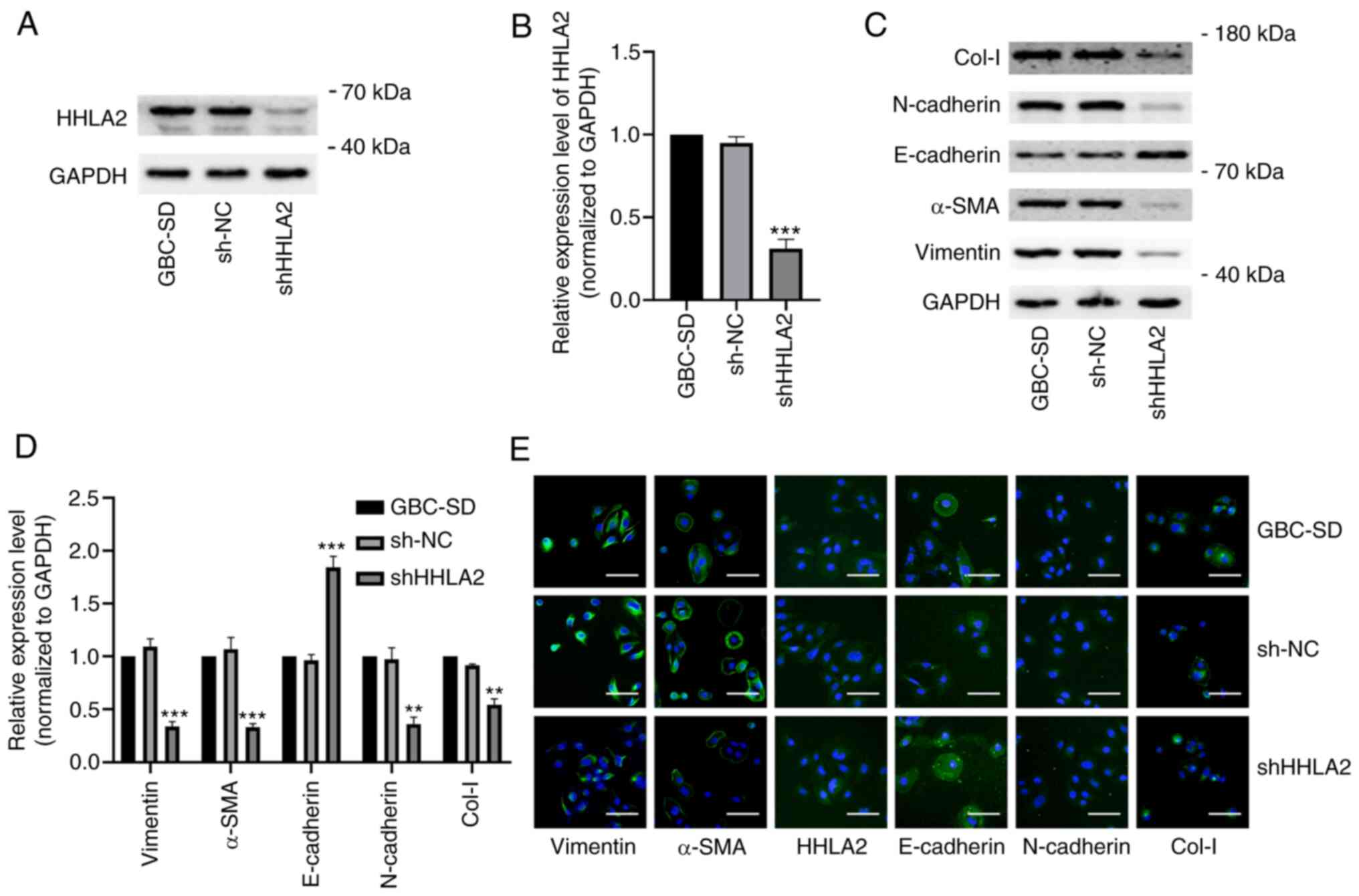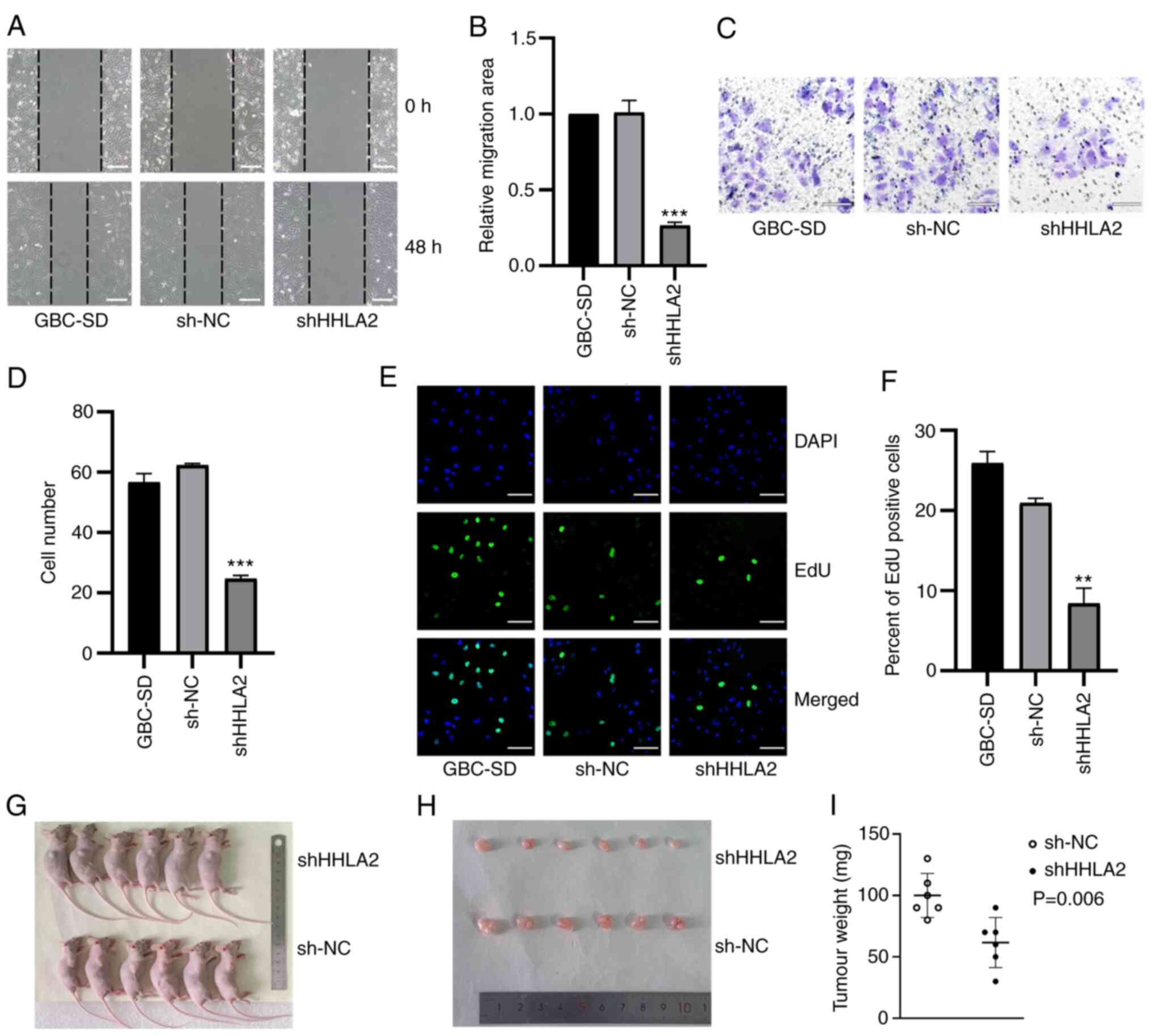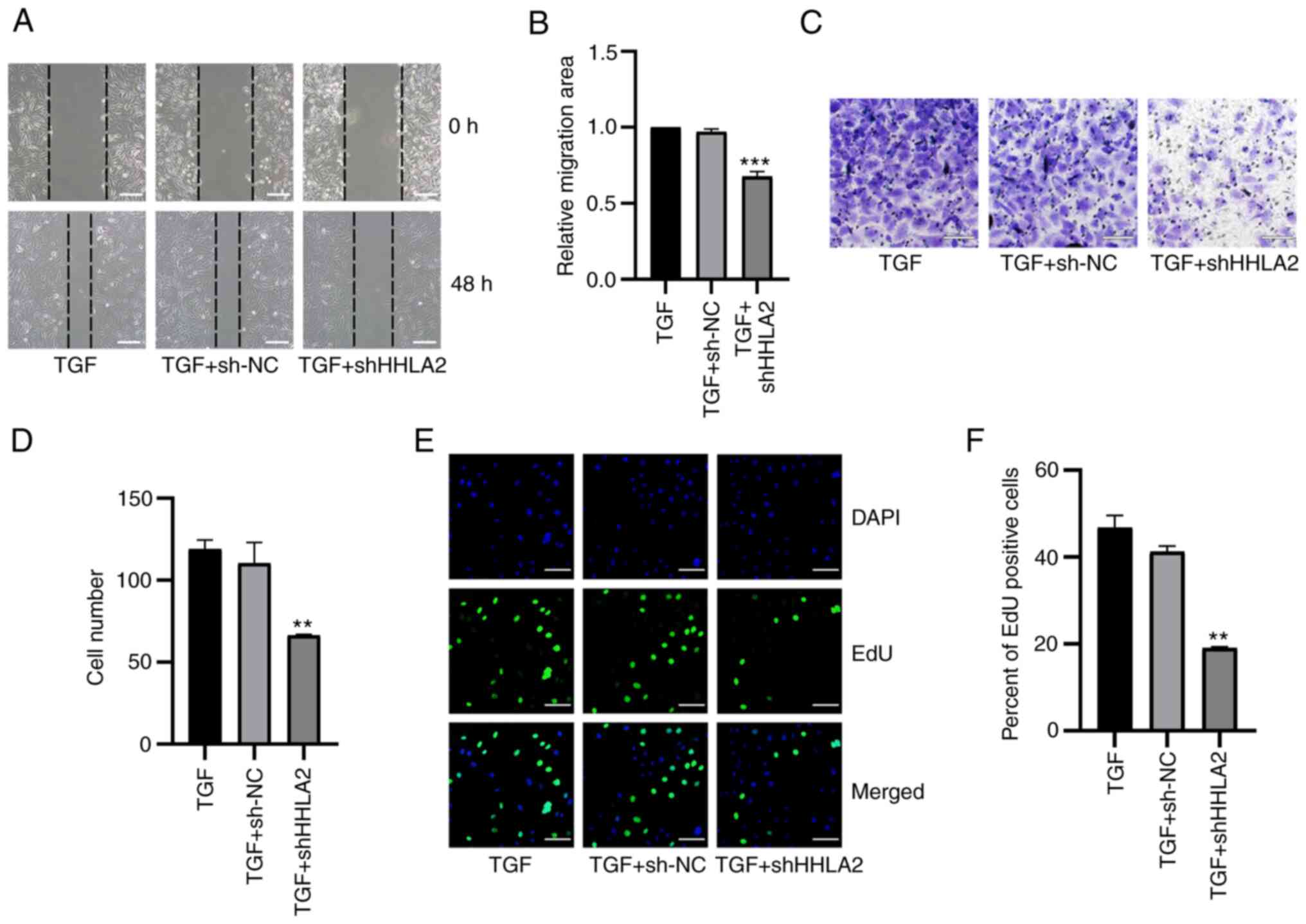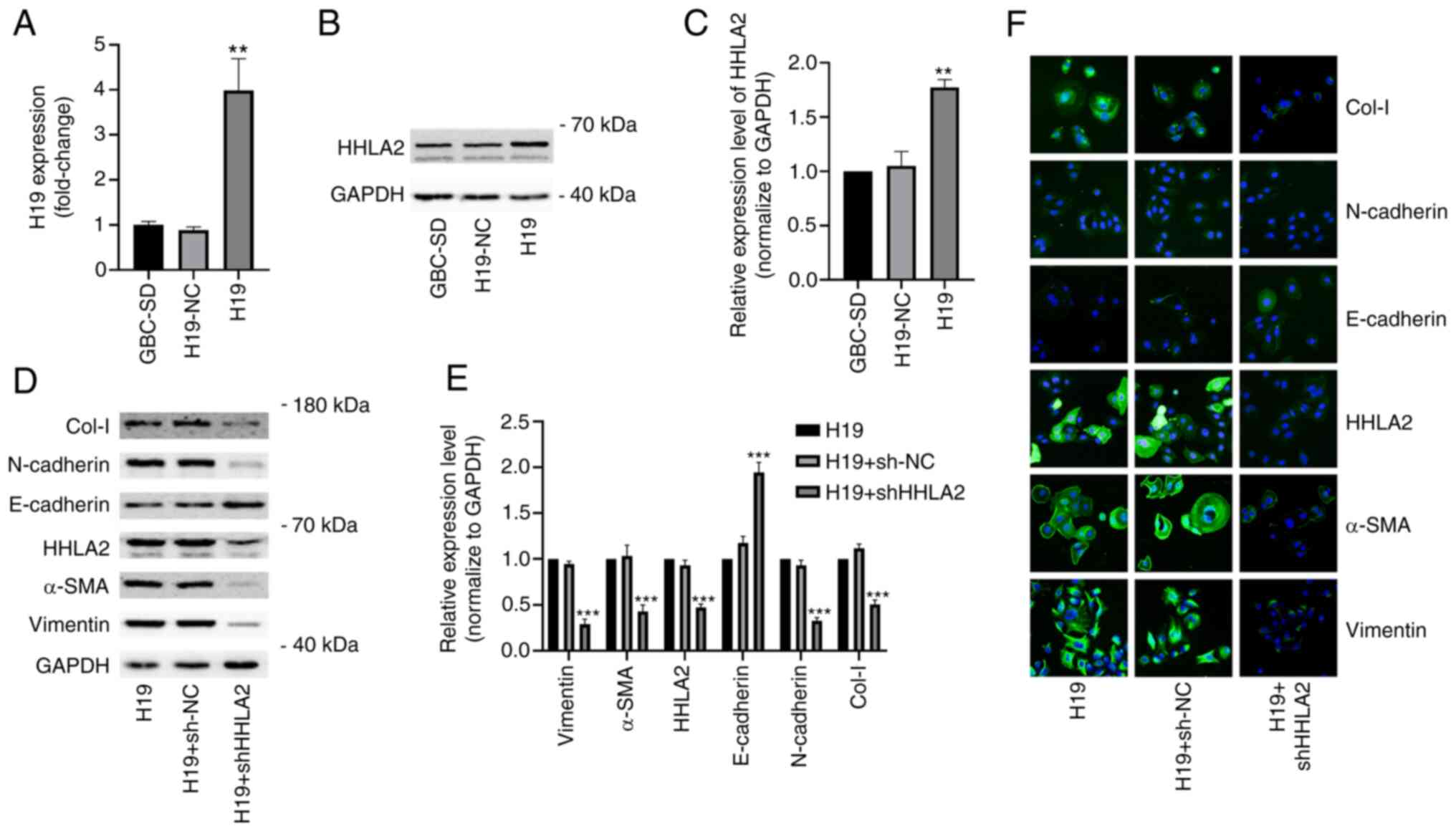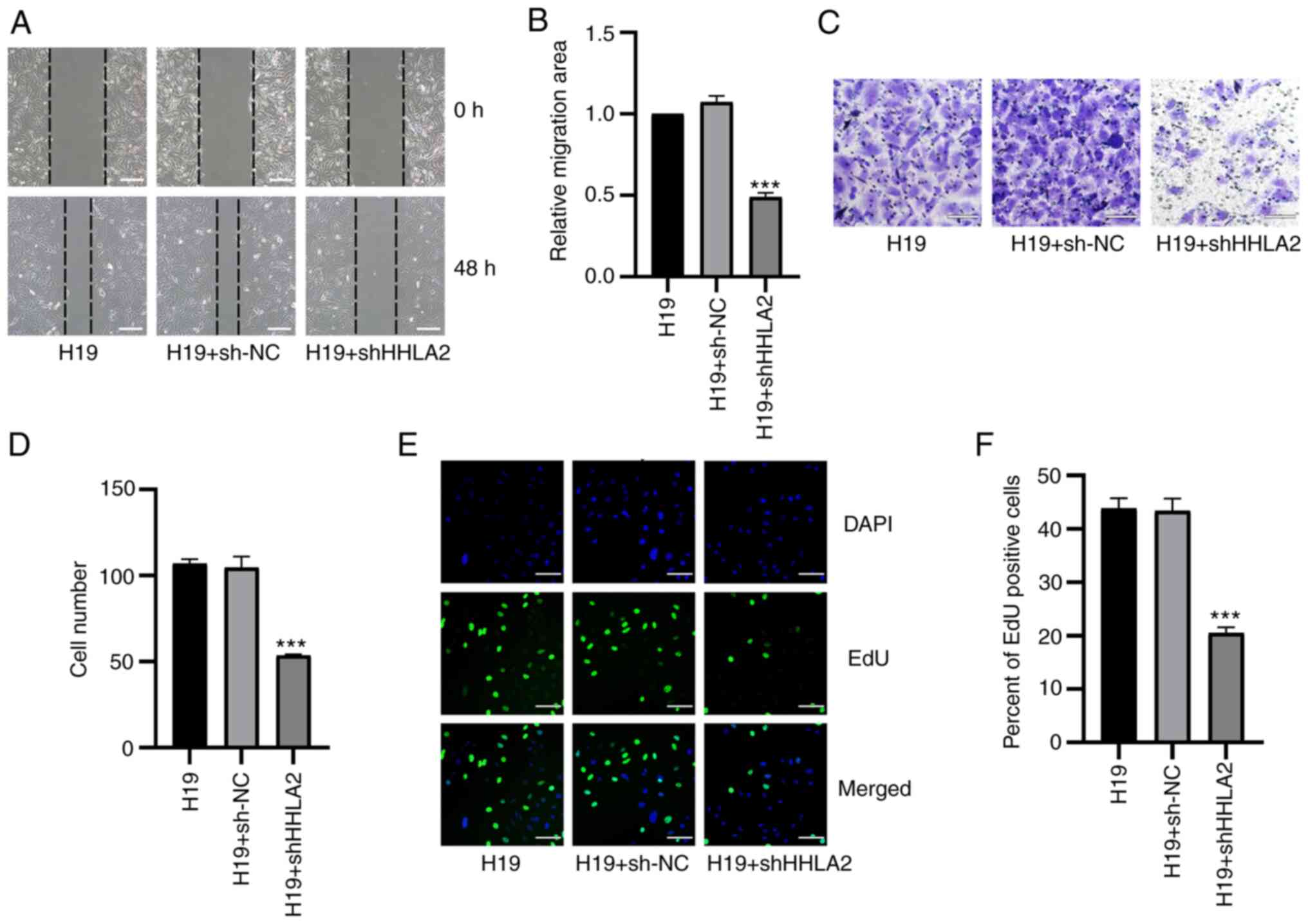|
1
|
Castro FA, Koshiol J, Hsing AW and Devesa
SD: Biliary tract cancer incidence in the United States-Demographic
and temporal variations by anatomic site. Int J Cancer.
133:1664–1671. 2013. View Article : Google Scholar : PubMed/NCBI
|
|
2
|
Acharya M, Patkar S, Parray A and Goel M:
Management of gallbladder cancer in India. Chin Clin Oncol.
8:352019. View Article : Google Scholar : PubMed/NCBI
|
|
3
|
Song X, Hu Y, Li Y, Shao R, Liu F and Liu
Y: Overview of current targeted therapy in gallbladder cancer.
Signal Transduct Targeted Ther. 5:2302020. View Article : Google Scholar
|
|
4
|
Jin L, Cai Q, Wang S, Wang S, Wang J and
Quan Z: Long noncoding RNA PVT1 promoted gallbladder cancer
proliferation by epigenetically suppressing miR-18b-5p via DNA
methylation. Cell Death Dis. 11:8712020. View Article : Google Scholar : PubMed/NCBI
|
|
5
|
McNamara M, Lopes A, Wasan H, Malka D,
Goldstein D, Shannon J, Okusaka T, Knox JJ, Wagner AD, André T, et
al: Landmark survival analysis and impact of anatomic site of
origin in prospective clinical trials of biliary tract cancer. J
Hepatol. 73:1109–1117. 2020. View Article : Google Scholar : PubMed/NCBI
|
|
6
|
Jackson S, Adami H, Andreotti G,
Beane-Freeman LE, de González AB, Buring JE, Fraser GE, Freedman
ND, Gapstur SM, Gierach G, et al: Associations between reproductive
factors and biliary tract cancers in women from the biliary tract
cancers pooling project. J Hepatol. 73:863–872. 2020. View Article : Google Scholar : PubMed/NCBI
|
|
7
|
Bray F, Ferlay J, Soerjomataram I, Siegel
RL, Torre LA and Jemal A: Global cancer statistics 2018: GLOBOCAN
estimates of incidence and mortality worldwide for 36 cancers in
185 countries. CA Cancer J Clin. 68:394–424. 2018. View Article : Google Scholar : PubMed/NCBI
|
|
8
|
Regmi P, Hu HJ, Chang-Hao Y, Liu F, Ma WJ,
Ran CD, Wang JK, Paudyal A, Cheng NS and Li FY: Laparoscopic
surgery for oncologic extended resection of T1b and T2 incidental
gallbladder carcinoma at a high-volume center: A single-center
experience in China. Surg Endos. 35:6505–6512. 2020. View Article : Google Scholar
|
|
9
|
Rizzo A, Tavolari S, Ricci AD, Frega G,
Palloni A, Relli V, Salati M, Fenocchio E, Massa A, Aglietta M and
Brandi G: Molecular features and targeted therapies in extrahepatic
cholangiocarcinoma: Promises and failures. Cancers (Basel). 12. pp.
32562020, View Article : Google Scholar
|
|
10
|
Valle JW, Kelley RK, Nervi B, Oh DY and
Zhu AX: Biliary tract cancer. Lancet. 397:428–444. 2021. View Article : Google Scholar : PubMed/NCBI
|
|
11
|
Ebata N, Fujita M, Sasagawa S, Maejima K,
Okawa Y, Hatanaka Y, Mitsuhashi T, Oosawa-Tatsuguchi A, Tanaka H,
Miyano S, et al: Molecular classification and tumor
microenvironment characterization of gallbladder cancer by
comprehensive genomic and transcriptomic analysis. Cancers.
13:7332021. View Article : Google Scholar : PubMed/NCBI
|
|
12
|
Nepal C, Zhu B, O'Rourke C, Bhatt DK, Lee
D, Song L, Wang D, Van Dyke AL, Choo-Wosoba H, Liu Z, et al:
Integrative molecular characterisation of gallbladder cancer
reveals micro-environment-associated subtypes. J Hepatol.
74:1132–1144. 2021. View Article : Google Scholar
|
|
13
|
Zou W and Chen L: Inhibitory B7-family
molecules in the tumour microenvironment. Nat Rev Immunol.
8:467–477. 2008. View Article : Google Scholar : PubMed/NCBI
|
|
14
|
Zhu Y, Yao S, Iliopoulou BP, Han X,
Augustine MM, Xu H, Phennicie RT, Flies SJ, Broadwater M, Ruff W,
et al: B7-H5 costimulates human T cells via CD28H. Nat Commun.
4:20432013. View Article : Google Scholar : PubMed/NCBI
|
|
15
|
Crespo J, Vatan L, Maj T, Liu R, Kryczek I
and Zou W: Phenotype and tissue distribution of CD28H immune cell
subsets. Oncoimmunology. 6:e13625292017. View Article : Google Scholar
|
|
16
|
Bhatt R, Berjis A, Konge JC, Mahoney KM,
Klee AN, Freeman SS, Chen CH, Jegede OA, Catalano PJ, Pignon JC, et
al: KIR3DL3 is an inhibitory receptor for HHLA2 that mediates an
alternative immunoinhibitory pathway to PD1. Cancer Immunol Res.
9:156–169. 2021. View Article : Google Scholar :
|
|
17
|
Dong Z, Zhang L, Xu W and Zhang G: EGFR
may participate in immune evasion through regulation of B7-H5
expression in non-small cell lung carcinoma. Mol Med Rep.
18:3769–3779. 2018.PubMed/NCBI
|
|
18
|
Luo M, Lin Y, Liang R, Li Y and Ge L:
Clinical significance of the HHLA2 protein in hepatocellular
carcinoma and the tumor microenvironment. J Inflamm Res.
14:4217–4228. 2021. View Article : Google Scholar : PubMed/NCBI
|
|
19
|
Zhou Q, Li K, Lai Y, Yao K, Wang Q, Zhan
X, Peng S, Cai W, Yao W, Zang X, et al: B7 score and T cell
infiltration stratify immune status in prostate cancer. J
Immunother Cancer. 9:e0024552021. View Article : Google Scholar : PubMed/NCBI
|
|
20
|
Xu G, Shi Y, Ling X, Wang D, Liu Y, Lu H,
Peng Y and Zhang B: HHLA2 predicts better survival and exhibits
inhibited proliferation in epithelial ovarian cancer. Cancer Cell
Int. 21:2522021. View Article : Google Scholar : PubMed/NCBI
|
|
21
|
Winkle M, El-Daly SM, Fabbri M and Calin
GA: Noncoding RNA therapeutics-challenges and potential solutions.
Nat Rev Drug Discov. 20:629–651. 2021. View Article : Google Scholar : PubMed/NCBI
|
|
22
|
Rainier S, Johnson LA, Dobry CJ, Ping AJ,
Grundy PE and Feinberg AP: Relaxation of imprinted genes in human
cancer. Nature. 362:747–749. 1993. View Article : Google Scholar : PubMed/NCBI
|
|
23
|
Liu SJ, Dang HX, Lim DA, Feng FY and Maher
CA: Long noncoding RNAs in cancer metastasis. Nat Rev Cancer.
21:446–460. 2021. View Article : Google Scholar : PubMed/NCBI
|
|
24
|
Wang SH, Ma F, Tang ZH, Wu XC, Cai Q,
Zhang MD, Weng MZ, Zhou D, Wang JD and Quan ZW: Long non-coding RNA
H19 regulates FOXM1 expression by competitively binding endogenous
miR-342-3p in gallbladder cancer. J Exp Clin Cancer Res.
35:1602016. View Article : Google Scholar : PubMed/NCBI
|
|
25
|
Wang SH, Wu XC, Zhang MD, Weng MZ, Zhou D
and Quan ZW: Upregulation of H19 indicates a poor prognosis in
gallbladder carcinoma and promotes epithelial-mesenchymal
transition. Am J Cancer Res. 6:15–26. 2016.PubMed/NCBI
|
|
26
|
Giannis D, Cerullo M, Moris D, Shah KN,
Herbert G, Zani S, Blazer DG III, Allen PJ and Lidsky ME:
Validation of the 8th edition American joint commission on cancer
(AJCC) gallbladder cancer staging system: Prognostic discrimination
and identification of key predictive factors. Cancers. 13:5472021.
View Article : Google Scholar : PubMed/NCBI
|
|
27
|
Nagtegaal ID, Odze RD, Klimstra D, Paradis
V, Rugge M, Schirmacher P, Washington KM and Carneiro F: The 2019
WHO classification of tumours of the digestive system.
Histopathology. 76:182–188. 2020. View Article : Google Scholar :
|
|
28
|
Xu X, He M, Wang H, Zhan M and Yang L:
Development and validation of a prognostic nomogram for gallbladder
cancer patients after surgery. BMC Gastroenterol. 22:2002022.
View Article : Google Scholar : PubMed/NCBI
|
|
29
|
Camp RL, Dolled-Filhart M and Rimm DL:
X-tile: A new bio-informatics tool for biomarker assessment and
outcome-based cut-point optimization. Clin Cancer Res.
10:7252–7259. 2004. View Article : Google Scholar : PubMed/NCBI
|
|
30
|
Livak KJ and Schmittgen TD: Analysis of
relative gene expression data using real-time quantitative PCR and
the 2(-Delta Delta C(T)) method. Methods. 25:402–408. 2001.
View Article : Google Scholar
|
|
31
|
Clark JM and Sun D: Guidelines for the
ethical review of laboratory animal welfare People's Republic of
China National Standard GB/T 35892-2018[Issued 6 February 2018
Effective from 1 September 2018]. Animal Models Exp Med. 3:103–113.
2020. View Article : Google Scholar
|
|
32
|
Cheng H, Janakiram M, Borczuk A, Lin J,
Qiu W, Liu H, Chinai JM, Halmos B, Perez-Soler R and Zang X: HHLA2,
a new immune checkpoint member of the B7 family, is widely
expressed in human lung cancer and associated with EGFR mutational
status. Clin Cancer Res. 23:825–832. 2017. View Article : Google Scholar :
|
|
33
|
Boor P, Sideras K, Biermann K, Aziz MH,
Levink IJM, Mancham S, Erler NS, Tang X, van Eijck CH, Bruno MJ, et
al: HHLA2 is expressed in pancreatic and ampullary cancers and
increased expression is associated with better post-surgical
prognosis. Br J Cancer. 122:1211–1218. 2020. View Article : Google Scholar : PubMed/NCBI
|
|
34
|
Zhong C, Lang Q, Yu J, Wu S, Xu F and Tian
Y: Phenotypical and potential functional characteristics of
different immune cells expressing CD28H/B7-H5 and their
relationship with cancer prognosis. Clin Exp Immunol. 200:12–21.
2020. View Article : Google Scholar : PubMed/NCBI
|
|
35
|
Seaman S, Zhu Z, Saha S, Zhang XM, Yang
MY, Hilton MB, Morris K, Szot C, Morris H, Swing DA, et al:
Eradication of tumors through simultaneous ablation of
CD276/B7-H3-positive tumor cells and tumor vasculature. Cancer
Cell. 31:501–515.e8. 2017. View Article : Google Scholar : PubMed/NCBI
|
|
36
|
Schildberg FA, Klein SR, Freeman GJ and
Sharpe AH: Coinhibitory pathways in the B7-CD28 ligand-receptor
family. Immunity. 44:955–972. 2016. View Article : Google Scholar : PubMed/NCBI
|
|
37
|
Marangoni F, Zhakyp A, Corsini M, Geels
SN, Carrizosa E, Thelen M, Mani V, Prüßmann JN, Warner RD, Ozga AJ,
et al: Expansion of tumor-associated Treg cells upon disruption of
a CTLA-4-dependent feedback loop. Cell. 184:3998–4015.e19. 2021.
View Article : Google Scholar : PubMed/NCBI
|
|
38
|
Nishimura CD, Pulanco MC, Cui W, Lu L and
Zang X: PD-L1 and B7-1 cis-interaction: New mechanisms in immune
checkpoints and immunotherapies. Trends Mol Med. 27:207–219. 2021.
View Article : Google Scholar
|
|
39
|
Chen L, Gibbons DL, Goswami S, Cortez MA,
Ahn YH, Byers LA, Zhang X, Yi X, Dwyer D, Lin W, et al: Metastasis
is regulated via microRNA-200/ZEB1 axis control of tumour cell
PD-L1 expression and intratumoral immunosuppression. Nat Commun.
5:52412014. View Article : Google Scholar : PubMed/NCBI
|
|
40
|
Lee Y, Shin J, Longmire M, Wang H, Kohrt
HE, Chang HY and Sunwoo JB: CD44+ cells in head and neck squamous
cell carcinoma suppress T-cell-mediated immunity by selective
constitutive and inducible expression of PD-L1. Clin Cancer Res.
22:3571–3581. 2016. View Article : Google Scholar : PubMed/NCBI
|
|
41
|
Alsuliman A, Colak D, Al-Harazi O, Fitwi
H, Tulbah A, Al-Tweigeri T, Al-Alwan M and Ghebeh H: Bidirectional
cross-talk between PD-L1 expression and epithelial to mesenchymal
transition: significance in claudin-low breast cancer cells. Mol
Cancer. 14:1492015. View Article : Google Scholar
|
|
42
|
Hsu JM, Xia W, Hsu YH, Chan L, Yu WH, Cha
JH, Chen CT, Liao HW, Kuo CW, Khoo KH, et al: STT3-dependent PD-L1
accumulation on cancer stem cells promotes immune evasion. Nat
Commun. 9:19082018. View Article : Google Scholar : PubMed/NCBI
|
|
43
|
Xu S, Zhan M and Wang J:
Epithelial-to-mesenchymal transition in gallbladder cancer: From
clinical evidence to cellular regulatory networks. Cell Death
Discov. 3:170692017. View Article : Google Scholar : PubMed/NCBI
|
|
44
|
Krebs AM, Mitschke J, Losada MA,
Schmalhofer O, Boerries M, Busch H, Boettcher M, Mougiakakos D,
Reichardt W, Bronsert P, et al: The EMT-activator Zeb1 is a key
factor for cell plasticity and promotes metastasis in pancreatic
cancer. Nat Cell Biol. 19:518–529. 2017. View Article : Google Scholar : PubMed/NCBI
|
|
45
|
Cao L, Bridle KR, Shrestha R, Prithviraj
P, Crawford DHG and Jayachandran A: CD73 and PD-L1 as potential
therapeutic targets in gallbladder cancer. Int J Mol Sci.
23:15652022. View Article : Google Scholar : PubMed/NCBI
|
|
46
|
Shi Y, Sun L, Zhang R, Hu Y, Wu Y, Dong X,
Dong D, Chen C, Geng Z, Li E and Fan Y: Thrombospondin 4/integrin
α2/HSF1 axis promotes proliferation and cancer stem-like traits of
gallbladder cancer by enhancing reciprocal crosstalk between
cancer-associated fibroblasts and tumor cells. J Exp Clin Cancer
Res. 40:142021. View Article : Google Scholar
|
|
47
|
Yin Y, Shi L, Yang J, Wang H, Yang H and
Wang Q: B7 family member H4 induces epithelial-mesenchymal
transition and promotes the proliferation, migration and invasion
of colorectal cancer cells. Bioengineered. 13:107–118. 2022.
View Article : Google Scholar :
|
|
48
|
Kang JH, Jung MY and Leof EB: B7-1 drives
TGF-β stimulated pancreatic carcinoma cell migration and expression
of EMT target genes. PLoS One. 14:e02220832019. View Article : Google Scholar
|
|
49
|
Kang F-B, Wang L, Jia H-C, Li D, Li H-J,
Zhang Y-G and Sun D-X: B7-H3 promotes aggression and invasion of
hepatocellular carcinoma by targeting epithelial-to-mesenchymal
transition via JAK2/STAT3/Slug signaling pathway. Cancer Cell Int.
15:452015. View Article : Google Scholar : PubMed/NCBI
|
|
50
|
Lee DW, Lee SH, Kim JS, Park J, Cho YL,
Kim KS, Jo DY, Song IC, Kim N, Yun HJ, et al: Loss of NDRG2
promotes epithelial-mesenchymal transition of gallbladder carcinoma
cells through MMP-19-mediated Slug expression. J Hepatol.
63:1429–1439. 2015. View Article : Google Scholar : PubMed/NCBI
|
|
51
|
Wu K, Liang W, Feng L, Pang JX, Waye MMY,
Zhang JF and Fu WM: H19 mediates methotrexate resistance in
colorectal cancer through activating Wnt/β-catenin pathway. Exp
Cell Res. 350:312–317. 2017. View Article : Google Scholar
|
|
52
|
Yan L, Yang S, Yue CX, Wei XY, Peng W,
Dong ZY, Xu HN, Chen SL, Wang WR, Chen CJ and Yang QL: Long
noncoding RNA H19 acts as a miR-340-3p sponge to promote
epithelial-mesenchymal transition by regulating YWHAZ expression in
paclitaxel-resistant breast cancer cells. Environ Toxicol.
35:1015–1028. 2020. View Article : Google Scholar : PubMed/NCBI
|
|
53
|
Wu B, Zhang Y, Yu Y, Zhong C, Lang Q,
Liang Z, Lv C, Xu F and Tian Y: ViaLong noncoding RNA H19: A novel
therapeutic target emerging in oncology regulating oncogenic
signaling pathways. Front Cell Dev Biol. 9:7967402021. View Article : Google Scholar
|
|
54
|
Jang H-R, Shin S-B, Kim C-H, Won J-Y, Xu
R, Kim D-E and Yim H: PLK1/vimentin signaling facilitates immune
escape by recruiting Smad2/3 to PD-L1 promoter in metastatic lung
adenocarcinoma. Cell Death Diff. 28:2745–2764. 2021. View Article : Google Scholar
|
















